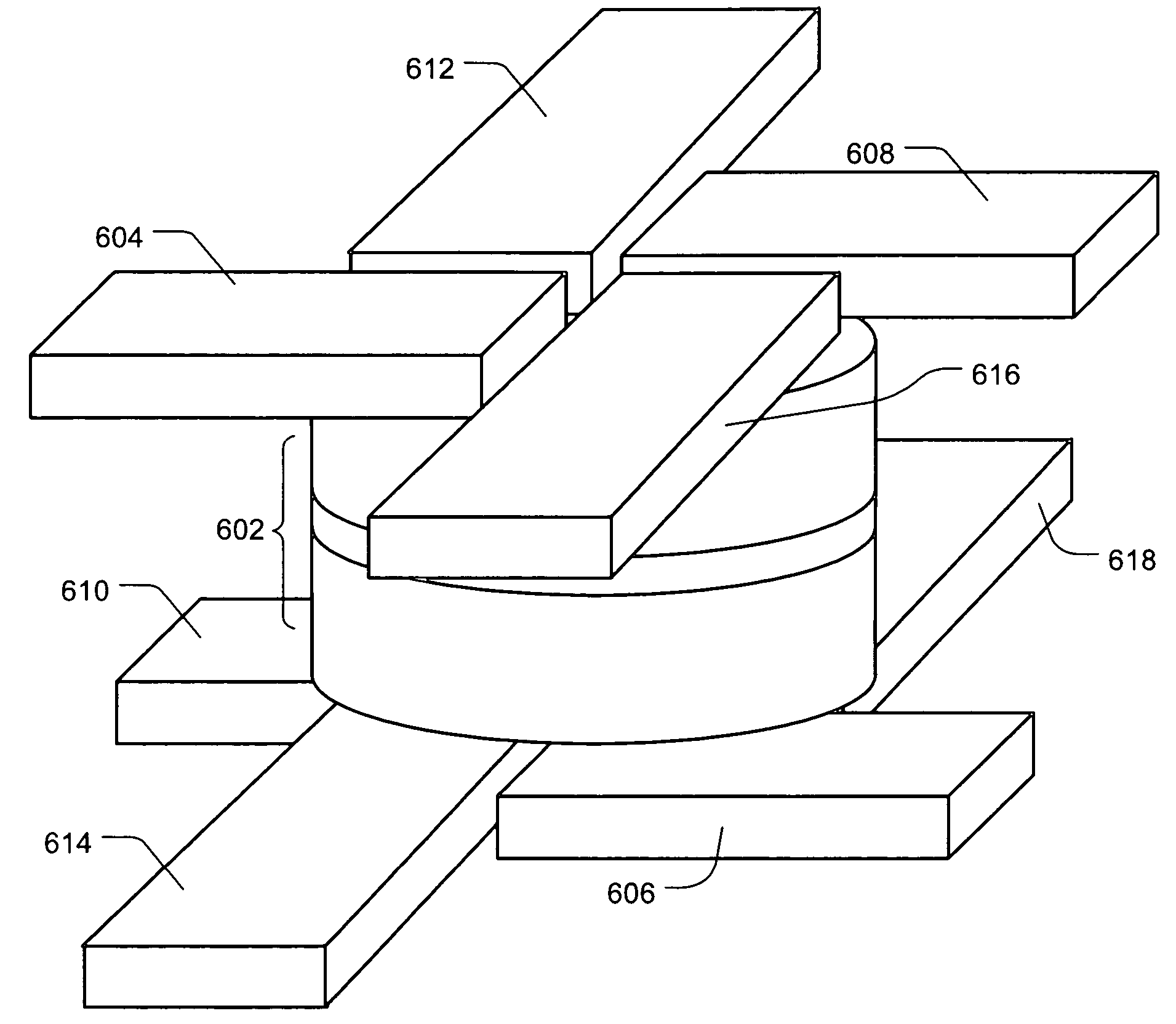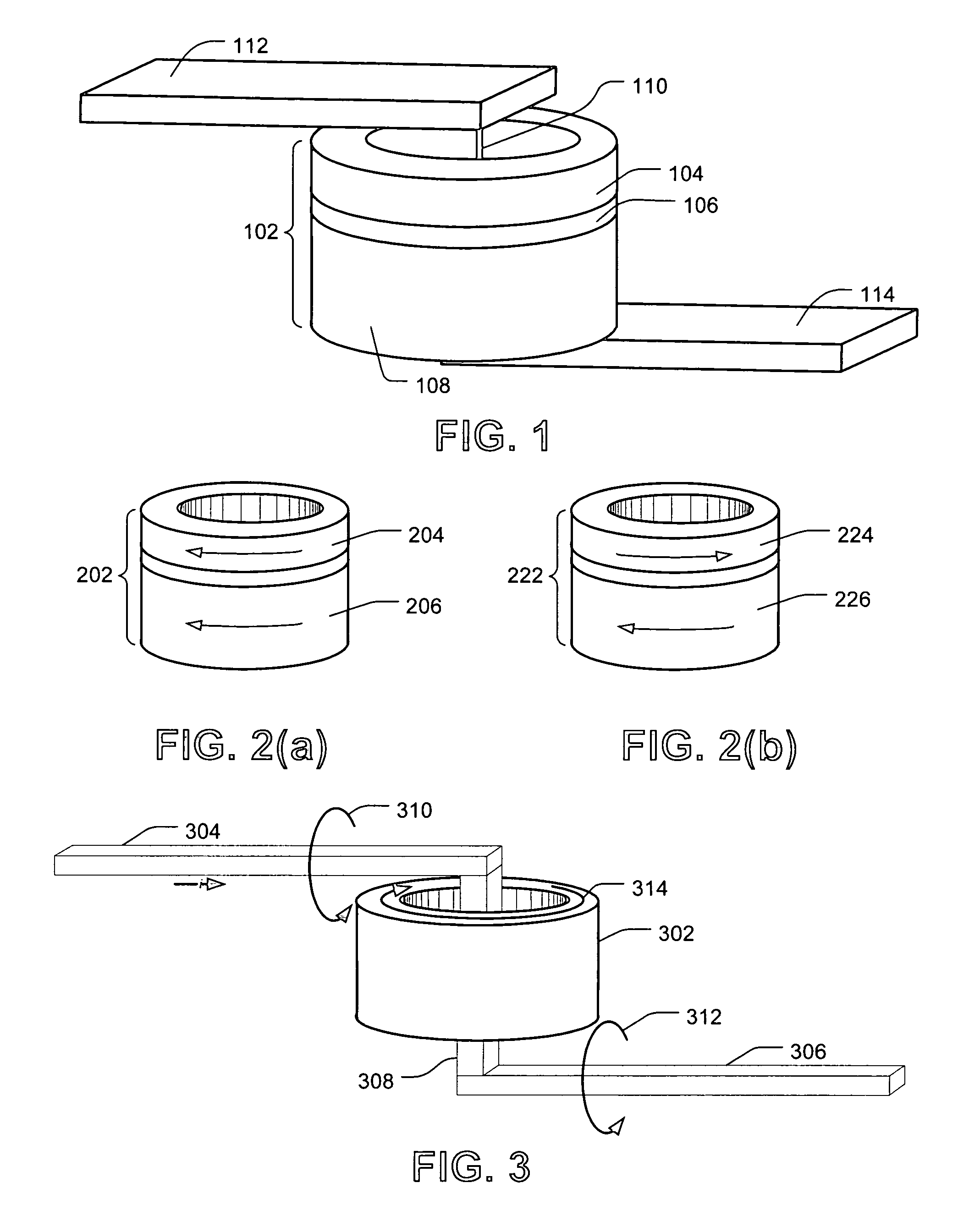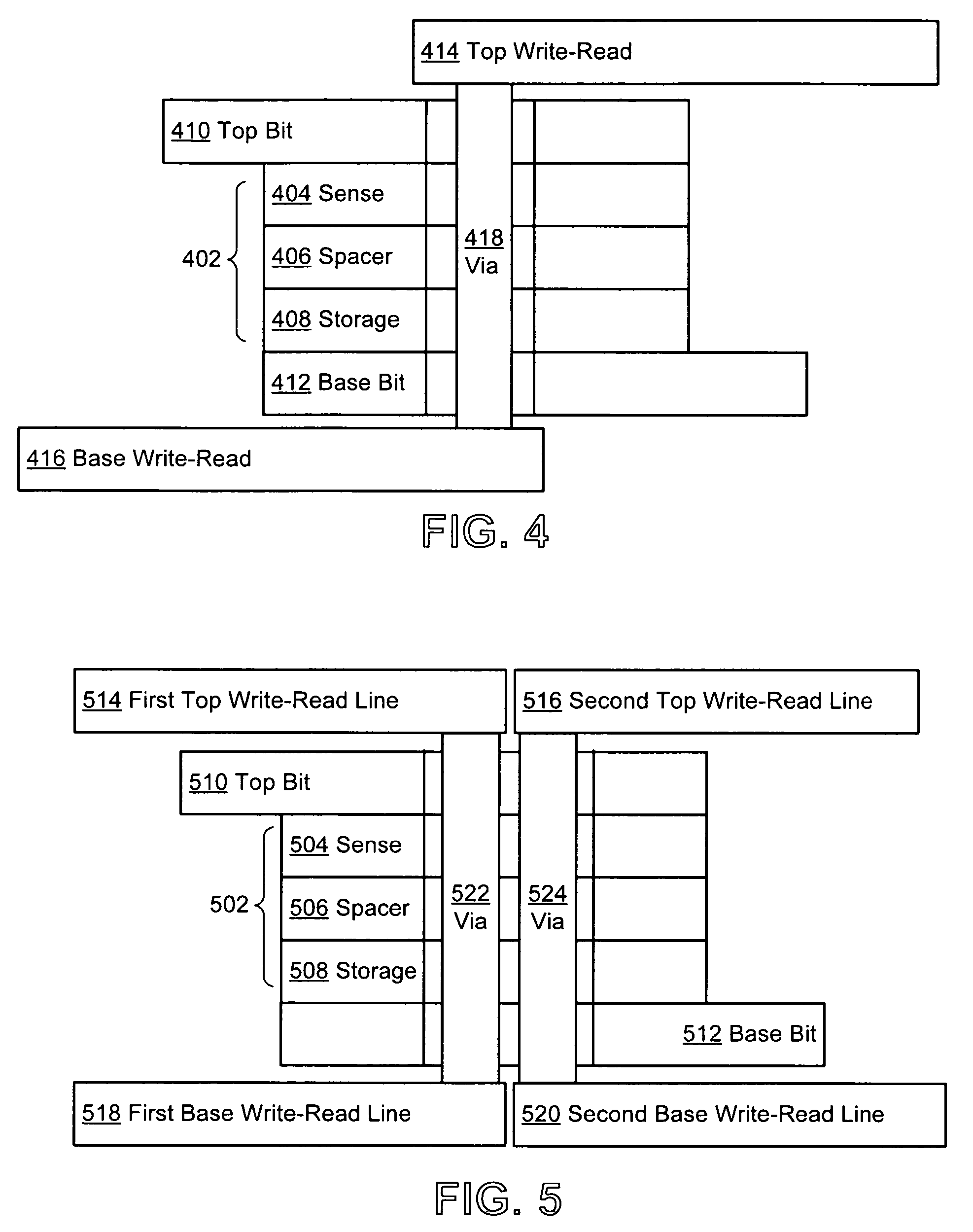Nonvolatile memory vertical ring bit and write-read structure
a vertical ring bit, nonvolatile memory technology, applied in the field of magnetic memory, can solve problems such as inability to eliminate problems, create complex magnetic domains, and interfere with adjacent bits by stray fields
- Summary
- Abstract
- Description
- Claims
- Application Information
AI Technical Summary
Benefits of technology
Problems solved by technology
Method used
Image
Examples
Embodiment Construction
1. Overview
[0031]In an exemplary embodiment, a memory cell has a ring-shaped magnetoresistive element (or bit) configured with a word line threaded through a center hole in the ring-shaped element. FIG. 1 provides a perspective view of a simplified memory cell. A ring-shaped multilayer magnetoresistive element 102 is shown having three ring layers stacked vertically. Two ferromagnetic ring layers, 104 and 108, sandwich a nonmagnetic spacer layer 106 (typically copper for GMR or alumina Al2O3 for MTJ). A via 110 is positioned within a center hole (or aperture) of the ring-shaped element 102 and extends vertically from the top of the element 102 to the base of the ring-shaped element 102. A top write-read line 112 is coupled with the top of the via 110. The top write-read line 112 extends radially from the center hole past the curved perimeter of the ring-shaped element 102. Likewise, a base write-read line 114 is coupled with the base of the via 110. The top write-read line 114 exten...
PUM
 Login to View More
Login to View More Abstract
Description
Claims
Application Information
 Login to View More
Login to View More - R&D
- Intellectual Property
- Life Sciences
- Materials
- Tech Scout
- Unparalleled Data Quality
- Higher Quality Content
- 60% Fewer Hallucinations
Browse by: Latest US Patents, China's latest patents, Technical Efficacy Thesaurus, Application Domain, Technology Topic, Popular Technical Reports.
© 2025 PatSnap. All rights reserved.Legal|Privacy policy|Modern Slavery Act Transparency Statement|Sitemap|About US| Contact US: help@patsnap.com



